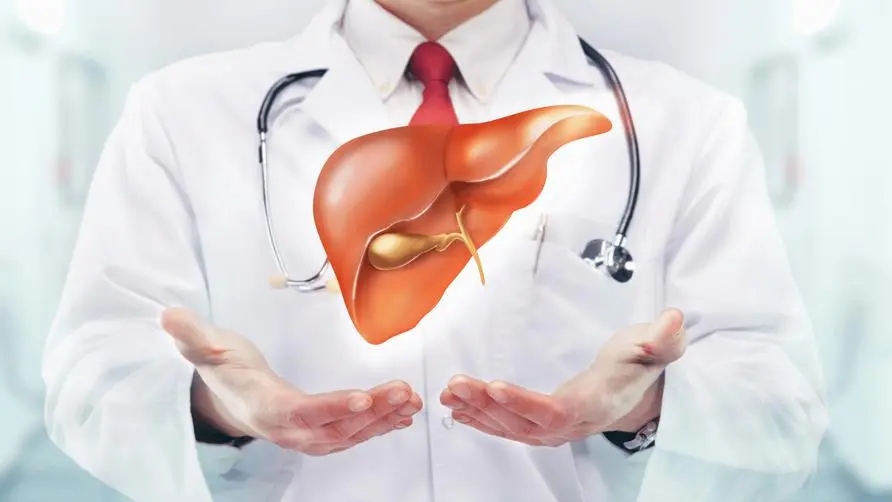Can stem cell transplantation really "cure" HIV? The most fearful thing about AIDS drug treatment is "stop eating"

First woman “cured” of HIV after HIV treatment. What is the drug treatment for HIV?
The United States has reported the third case in the world and the first case of a female infected with HIV (human immunodeficiency virus, AIDS) who recovered after receiving “stem cell transplantation” treatment. The report claimed that stem cell treatment not only cured the 64-year-old woman’s acute myelogenous leukemia, but also that no HIV virus could be detected in her body for 14 months. It shows that gene therapy has the potential to lead scientific progress toward a cure for HIV.
Dr. Gu Wenwei, director of the Department of Infectious Diseases, Taipei City Hospital Heping Renai Branch, said in an exclusive interview with “healthorn” that the standard treatment for HIV is antiviral therapy, or cocktail therapy, which has been developed since the 1997s. It uses a combination of 2-3 antiviral drugs to maintain a fixed The drug concentration can inhibit viral replication, so that the virus will not develop drug resistance, will not destroy the body’s immune function, and will not be infective.
Dr. Gu Wenwei pointed out that past studies have found that once the drug is stopped, the virus in the infected person’s body will often relapse, indicating that the HIV virus hides in dormant immune cells and is waiting for an opportunity to reappear. Therefore, the focus of antiviral treatment is to take medication regularly to maintain a fixed drug concentration in the body, and arbitrary discontinuation of medication is never recommended. There are also new long-acting drugs under development, and treatment methods are expected to be simpler in the future.
Can HIV-infected people be treated with stem cells? Risk rejection can do more harm than good
Dr. Gu Wenwei explained that the first case of stem cell therapy, the “Berlin patient”, originally had well-controlled HIV, but received stem cell paired transplantation because he suffered from acute leukemia and was ineffective in chemotherapy. The medical team screened for stem cell transplantation with “CCR5 Delta32/Delta32” gene defects. The HIV virus in his body has not recurred since then. This “Berlin patient” is in a similar situation to the third “New York patient” in the world.
If the CCR5 gene segment in stem cells has a Delta32/Delta32 mutation, it will be like a “keyhole” deformation on the surface of immune cells, making it impossible for the HIV virus to insert the “key” on the viral envelope into the keyhole and enter the immune cells. Cause infection and replication. However, this natural genetic mutation is quite rare in the population, accounting for less than 1% of white people, and even fewer black, Latino, and Asian people.
“Many patients ask if this can be done? In fact, it is very risky for ordinary people to undergo stem cell transplantation!” Dr. Gu Wenwei explained that stem cell transplantation requires detailed matching and high-dose chemotherapy and radiotherapy before transplantation. immune cells are completely destroyed. It is more likely that there will be poor stem cell production or immune rejection after surgery, and even long-term use of immunosuppressants is required.
Dr. Gu Wenwei pointed out that if HIV-infected patients take standard cocktail therapy and have good control, they do not have to rush into stem cell therapy and bear many risks such as chemotherapy side effects and rejection. In fact, stem cell therapy is mostly used on infected patients with blood cancer and lymphoma. Stem cell transplantation is a standard treatment for blood diseases. There is an opportunity to pair stem cells with genetic defects at the same time, allowing the body to develop a natural ability to fight against the HIV virus. Not universally available treatment.
Is irregular use of medication likely to lead to drug resistance? Epidemic interrupts drug suspension and spreads regrets
“The bottleneck of HIV treatment today is not that there are no effective drugs, but that a small number of infected people are unwilling to take drugs or do not take drugs regularly.” Dr. Gu Wenwei pointed out that if the drug is taken and stopped, the drug concentration in the body will drop and the virus will replicate at this time. , may cause the virus to develop drug resistance. Research in the early 2000s also found that even if medication is stopped under physician supervision, relapse of the HIV virus can easily cause inflammatory reactions in the liver and heart and even drug resistance.
Dr. Gu Wenwei emphasized that HIV drugs have been quite advanced now, and more than 90% of patients can achieve good control using first-line treatment. A few cases with poor control can also apply for second-line drug treatment. On the contrary, in recent years, we have to worry more about the interruption of treatment caused by the epidemic. There are even regrettable news that patients who were abroad during the epidemic fell ill and died due to drug withdrawal.
In addition, concerns about disease stigma and reluctance to accept screening and treatment are still key to HIV prevention and treatment. Dr. Gu Wenwei said that nowadays most HIV drugs are taken once a day. As long as the infected person follows the doctor’s instructions and takes medication regularly, their daily life is no different from that of ordinary people. Just be aware that a few types of drugs may interact with gastric medicines. You can consult a physician or personal care provider before taking any medicine.
The number of infections dropped by 50% in 5 years! Focus on the next phase of HIV prevention
The international HIV prevention and treatment goal is “90-90-90” (90% of infected people know their infection status, 90% of infected people take medication, and 90% of infected people who take medication have undetectable viral load), Taiwan has reached the target ahead of schedule From 90-93-95, the number of new infections dropped from a high of 2,508 in 2017 to 1,247 in 2021, a significant drop of more than 50%, showing that HIV prevention and treatment has achieved significant results.
Dr. Gu Wenwei said that in the future, the number of new infections is expected to continue to decline slowly, and more prevention and treatment methods must be adopted, such as pre-exposure prophylaxis (PrEP), encouraging STD screening, and condom wearing, so that the whole people can understand “U= U” (the virus is undetectable and non-infectious), the treatment goals and health education concepts will allow HIV prevention and care in Taiwan to move forward while maintaining current results.
Further reading:
Is wearing a condom not enough? Do I need to take PrEP every day to prevent HIV infection? Doctor: Maybe you need it if you have sex





